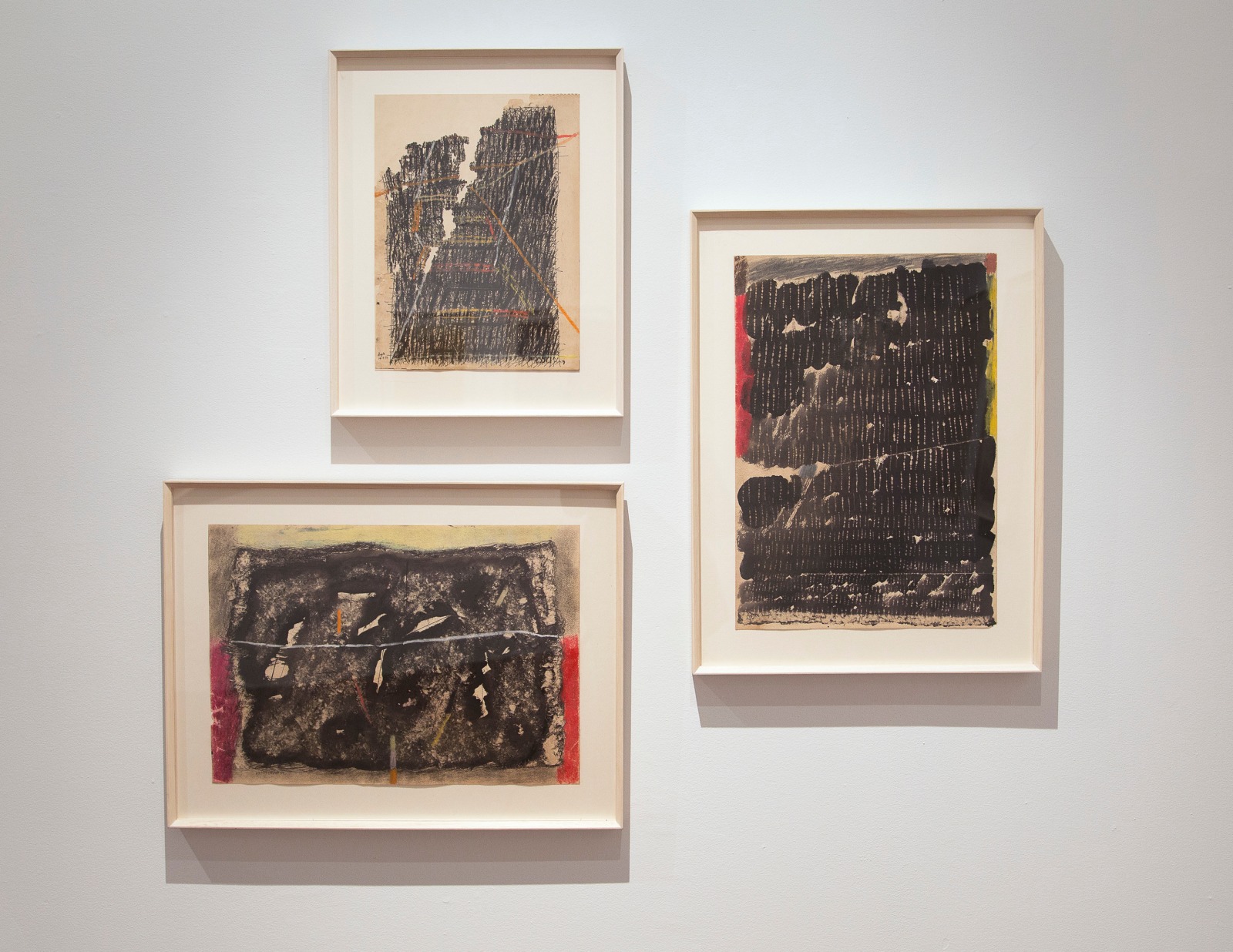
Exhibition View
Arpita Singh's abstract works show an artist rethinking basic means of her art
Best known for her figurative paintings, Arpita Singh unveiled a series of early abstract works for her ongoing show, 'Tying Down Time', at New York's Talwar Gallery. All untitled, these drawings show an artist in the process of rethinking the basic means of her art, rethinking the whole meaning of deliberate mark-making, while mostly eschewing the seductions of colour, recognisable imagery and overt cultural references. It's like a poet eschewing rhyme, meter and story, learning how to make do with just the sounds of the letters themselves. This back-to-basics approach also gives Singh's drawings a timeless and seemingly universal eloquence that suggests the rough, intimate and spontaneously expressive quality of classic Chinese literati painting as well as of elder contemporaries like Henri Michaux or Philip Guston.
In many of her drawings from the 1970s, Singh seems concerned with how to impose an overall sense of structure on concatenations of marks that would otherwise conjure something like a nebulous field with no distinct architecture. Thus, in one piece from 1978, a multitude of crosshatchings, sometimes densely packed together, elsewhere quite loosely spaced, create a sort of humming, vibratory field that seems to come in and out of focus. This fluctuating space is traversed in turn by a skein of long, precise, wiry lines that hold it fast like a tight net. In contrast, in her drawings from the early 1980s, she seems confident enough to let her marks do as they will. Here, her marks are often blunt and forceful, yet always ready to shift in character from one passage to the next. They gather and disperse in storms and swells, according to some unaccountable rhythm.
There's nothing delicate or fragile in this series of poignant, quietly courageous work. Sometimes stained or slightly battered, the drawings show their age proudly. This is art, after all, that survived the intensity of its own turbulent making.
-Barry Schwabsky